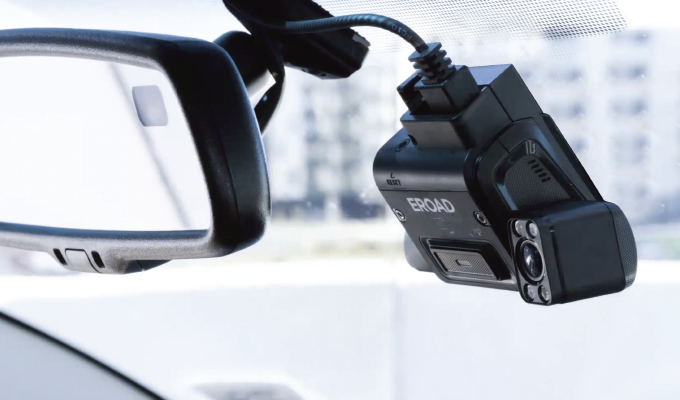It’s a great time for carriers to harness the power of telematics and fleet management technology to support fleet safety and efficiency throughout the winter months.
Keep reading to learn how telematics can help you and your drivers get through the winter driving season safely and successfully.
TRACK AND SCHEDULE
A roadside breakdown is never good. It’s even worse when it occurs amid winter driving conditions. The dangers posed by brake failures, blown tires, and mechanical issues only increase when they occur on slick or icy roads.
Common roadside repairs include tires, brakes, lighting, power plants, and exhaust systems. That’s why it’s important for carriers to be proactive with tracking and scheduling maintenance. Using software that tracks your fleet’s service history and sends automated maintenance alerts can help reduce roadside breakdowns and costly unplanned repairs.
In addition to a proactive maintenance program, pre-trip inspections are crucial to ensuring that a truck is ready to hit the wintry roads. Using paperless driver vehicle inspection reports can streamline the process for drivers and allow you easily to track vehicle defects and repairs.
Many fleets own far more trailers and pieces of equipment than tractors, which adds serious complexity to tracking, maintaining assets, and assigning loads. Advanced trailer telematics can support fleet safety by supplying real-time data about key trailer components, such as tire pressure and temperature and brake health. In addition to the safety and productivity gains that smart trailer tracking provides, it can help with employee satisfaction and retention because of the assurance that you’re sending drivers to roadworthy trailers that are ready to roll.
DRIVER BEHAVIOR
Speeding, following too closely, and harsh cornering are always dangerous. When you add inclement weather and poor road conditions to the mix, the potential for calamity increases. That’s not to say that drivers are at fault for serious accidents—statistically they are not—but the point is clear: winter driving conditions require extra caution.
Even the best drivers can lapse into bad habits. The more quickly you can identify and address instances of unsafe driving the better. A fleet management system that reports on safety-critical events gives you the actionable data you need for effective driver coaching.
Using tools and technology that allow you to measure driver performance within your organization and against industry benchmarks can help the entire team develop a positive view of these important metrics. This allows you to manage expectations, reward improvements, correct problem behaviors, and incentivize safe driving. A side benefit is fostering healthy competition among your drivers to see who can claim the title of safest driver.
ROAD VIEW
Footage from a dashcam can quickly show who is at fault in an accident, often exonerating the truck driver. Video evidence becomes increasingly important when trucks are operating in difficult winter driving conditions. While professional drivers may be taking proper safety measures, such as driving below the speed limit or allowing greater distance for braking, passenger car drivers may not. Dashcam footage will show if an accident is caused by a motorist driving in an unsafe manner for the conditions.
Dashcam footage also adds context to other telematics data on driver behavior for more effective—and fair—coaching. A harsh braking incident, for example, may be the fault of a passenger car driver that cuts off a commercial truck. An additional benefit of in-cab cameras is being able to see road conditions from the back office and allows you to coach drivers when it’s truly warranted. This contributes to better relationships in the workplace.
KNOW VEHICLE LOCATION
Visibility is crucial to effective fleet management. Telematics and dashcams let you know where your trucks are at any given moment, allowing you to make better dispatch decisions and provide accurate ETAs for customers. This visibility is especially important when trucks are operating in winter conditions, during which unforeseen delays may be more common, and when rerouting may be essential due to Mother Nature’s seasonal whims.
FINAL THOUGHT
Heavy truck fleets operating under the ELD mandate aren’t the only ones that can benefit from telematics and video. Fleets comprising light- and medium-duty vehicles, delivery vans, construction vehicles, and non-regulated heavy trucks can also use technology to boost safety and efficiency during the winter driving season, and all year long.
ABOUT THE AUTHOR
Ross Bradder, territory sales director and certified transportation professional with EROAD, has more than 10 years of experience in technology sales, specializing in telematics and transportation. Ross is a current member of the National Private Truck Council and has served on multiple state trucking association committees. He is a past chairman of the board of the Los Angeles Area Chamber of Commerce. Prior to his successful transition to technology, Ross served for more than 15 years in political nonprofits across the globe, where he supported efforts championed by President George W. Bush and South African President Nelson Mandela. To learn more visit, www.eroad.com.




